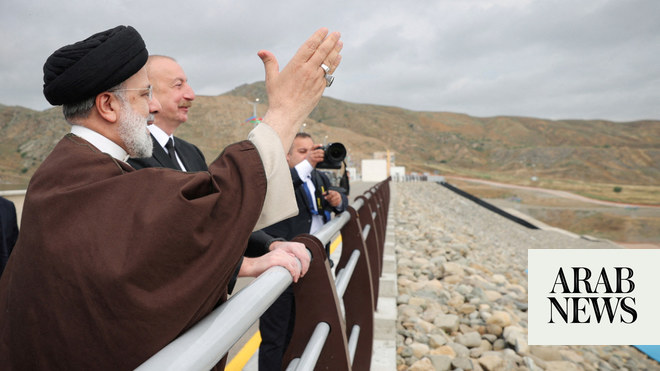
Awoman looks out at us, wearing the chador and holding the barrel of a gun against her face. She is defiant, determined, militant, brave. The title of the work, Rebellious Silence, evokes her quiet sense of power. Her steadfast gaze suggests conviction and belief. Across her face, in hand-drawn Farsi, is a feminist-focused poem that references the laws that came into play during the 1979 Iranian revolution, which still today require all Iranian women to wear the veil in public. “The written text is the voice of the photograph,” the artist, Shirin Neshat, said. “It breaks the silence of the still woman.”
Having lived in exile from Iran for 11 years, separated from her family, Neshat returned to the country of her birth in 1990. She had left as a teenager, when the foundations for the Islamic revolution were being laid, and continued her studies in the US. Upon her return, her country had been transformed.
Interested in engaging in the stories of the women who lived through and shaped the revolution, as well as connecting culturally and emotionally to her heritage, Neshat took to her camera. Conducting interviews, reading and speaking with friends, she gathered her findings into a visual vocabulary that resulted in two powerful photographic series: Unveiling (1993-4) and Women of Allah (1993-7).
Neshat focused on a group of religious women who, in the wake of the revolution, became “voluntarily militant”. Her images opened up a dialogue about the role of women and their bodies, a rejection of western imperialism, and the idea of martyrdom. The results are filled with contradictory symbols: violence and femininity, power and submission, religion and politics, love and death. “Women of Allah,” said Neshat, “asked how such women stood at that intersection of love, faith, devotion – yet cruelty, violence and ultimately death.”
She went through its elements: “The weapon suggested the violence that came with the Islamic regime; the veil, both as a symbol of repression, for those who are against mandatory hijab, and submission for the extremely religious women.”
By using the female body – which, in Neshat’s words, has been “used as a battleground for men’s religious and ideological rhetoric” – the work brings to light the long and continuous discussions around the control of women and the way they dress by those in power. During the 1925-41 Reza Shah reign, women were unveiled by force. After the 1979 revolution, they were subjected to compulsory hijab laws. Today, they are bravely protesting.
Over the past few weeks, hundreds of protests have erupted in the streets of Iran following the death of Mahsa Amini. She was a healthy 22-year-old woman who, while visiting Tehran with her family, was stopped by the morality police for wearing her hijab in an “improper” manner. Amini was taken to a detention centre, and died three days later in suspicious circumstances while in police custody.
Bravely standing in solidarity with Amini, women across Iran – and the world – have been cutting their hair, ripping off their headscarves, burning their hijabs and organising demonstrations. While the Iranian government has shut down internet access, videos circulating on social media have been documenting one of the most significant revolutions to happen for women in modern times. These videos also reveal the terrifying violence, panic and fear inflicted on protesters.
The heroism is astonishing. An unnamed protester speaking on CNN proclaimed: “We are not scared. We are outraged. People think that we are the previous generation – that if they do this we’re going to just stop. We are not going to stop. This is a one-way road for us. They will take even more people into custody, torture them, rape them. This is not the end.”
Whilst Neshat’s series is rooted in the women associated with the revolution of 1979, their gaze evokes the determination of the protesters today. The fact that the work is banned from Iran highlights the country’s conservatism. “Soon after I made the Women of Allah series ,” said Neshat, “it became very controversial. The government found it critical and attacked it as anti-revolution. I was advised not to return.”
The hand-drawn Farsi written across the woman’s face in Rebellious Silence is Tahereh Saffarzadeh’s poem Allegiance with Wakefulness. Combined with her powerful photos, the text speaks to the bravery of women in the 1979 revolution just as much as it does to those protesting today: “O, you martyr, / hold my hands / With your hands / Cut from earthly means / Hold my hands, / I am your poet. / With an inflicted body. / I’ve come to be with you / and on the promised day, / We shall rise again.”










